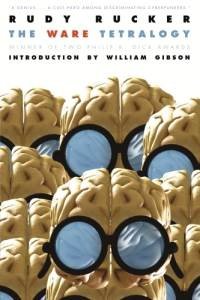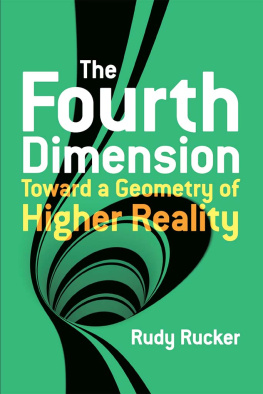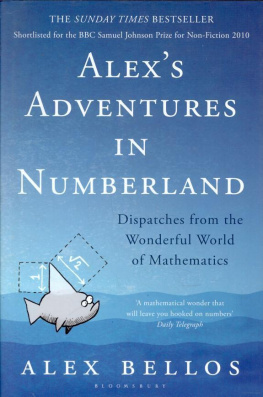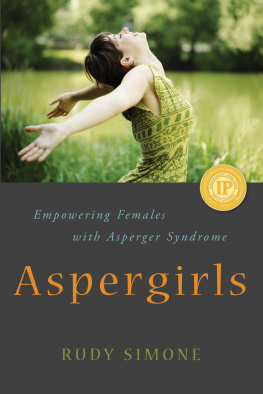Rudy Rucker - The Lifebox, the Seashell, and the Soul
Here you can read online Rudy Rucker - The Lifebox, the Seashell, and the Soul full text of the book (entire story) in english for free. Download pdf and epub, get meaning, cover and reviews about this ebook. year: 2016, publisher: Transreal Books, genre: Romance novel. Description of the work, (preface) as well as reviews are available. Best literature library LitArk.com created for fans of good reading and offers a wide selection of genres:
Romance novel
Science fiction
Adventure
Detective
Science
History
Home and family
Prose
Art
Politics
Computer
Non-fiction
Religion
Business
Children
Humor
Choose a favorite category and find really read worthwhile books. Enjoy immersion in the world of imagination, feel the emotions of the characters or learn something new for yourself, make an fascinating discovery.
- Book:The Lifebox, the Seashell, and the Soul
- Author:
- Publisher:Transreal Books
- Genre:
- Year:2016
- Rating:4 / 5
- Favourites:Add to favourites
- Your mark:
- 80
- 1
- 2
- 3
- 4
- 5
The Lifebox, the Seashell, and the Soul: summary, description and annotation
We offer to read an annotation, description, summary or preface (depends on what the author of the book "The Lifebox, the Seashell, and the Soul" wrote himself). If you haven't found the necessary information about the book — write in the comments, we will try to find it.
The Lifebox, the Seashell, and the Soul — read online for free the complete book (whole text) full work
Below is the text of the book, divided by pages. System saving the place of the last page read, allows you to conveniently read the book "The Lifebox, the Seashell, and the Soul" online for free, without having to search again every time where you left off. Put a bookmark, and you can go to the page where you finished reading at any time.
Font size:
Interval:
Bookmark:
The Lifebox, the Seashell, and the Soul
What Gnarly Computation Taught Me About
Ultimate Reality, The Meaning of Life,
And How to Be Happy
by
Rudy Rucker
Transreal Books
The Lifebox, the Seashell, and the Soul.
What Gnarly Computation Taught Me About
Ultimate Reality, The Meaning of Life,
And How to Be Happy.
Copyright 2005, 2016 by Rudy Rucker
Drawings by Isabel Rucker
Second edition: November, 2016
Transreal Books
First edition: October 2005
Thunders Mouth Press and Avalon Publishing
Paperback ISBN 978-1-940948-25-6
Ebook ISBN 978-1-940948-26-3

Transreal Books, Los Gatos, California.
www.transrealbooks.com
Preface
Preface to the Second Edition
Eventually , the first edition of The Lifebox, the Seashell, and the Soul went out of print. And no ebook version existed. So Im publishing it in print and ebook under my Transreal Books imprint. I fixed a few typos, clarified some of the definitions, and added new bits here and there.
The book has a long subtitle that summarizes whats ahead.
What Gnarly Computation Taught Me About
Ultimate Reality, The Meaning of Life,
And How to Be Happy.
Its fun inside this maze of thought. The logic is correct, and the conclusions are startling. The thing is, thinking very precisely about the nature of computation leads to a cornucopia of philosophical insights.
Simple rules can generate gnarly patterns. Physics obeys laws, but the outcomes arent predictable. Free will works because you cant think fast enough to know what youll do. Your jumps of consciousness are like the measurements in quantum mechanics. My books earn so much less than Stephen Kings because of universal scaling laws. It may well be that we live in one of the best realities that can actually exist. Its all here! Seriously.
My tome culminates with a proof of the Principle of Natural Undecidability . It says there can never be a simple trick for answering all possible questions about our worlds natural processes. No magic spell. No final formula. We live, in other words, amid splendor beyond our control.
Who would will it otherwise?
Rudy Rucker, Los Gatos, California, October 28, 2016
Preface to the First Edition
As a teenager in 1961, I imagined that Id like to become a philosopher. I recall agreeing with my best friend, Niles Schoening, that what wed most like to do would be to get college degrees in philosophy and spend the rest of our lives as bums, talking about the meaning of life.
As it turned out, I ended up getting a Ph.D. in mathematical logic. And instead of becoming a bum, I found work as a professor and as a writer of popular science and science fiction. I did keep talking about the meaning of life, though, to the point of publishing three somewhat philosophical books about mathematics: The Fourth Dimension, Infinity and the Mind, and Mind Tools.
In the mid-1980s I sensed something new in the air. Computers were ushering in an era of experimental mathematics. Fractals, chaos, cellular automata, artificial life! And when I interviewed Stephen Wolfram for a magazine article, my fate was sealed. I moved to Silicon Valley, retooled, and became a computer science professor at San Jose State University, also doing some work as a programmer for the computer graphics company Autodesk.
Back when I was contemplating my big switch to computer science, my old friend Gregory Gibson said something encouraging. Imagine if William Blake had worked in a textile mill. What might he have written then?
Initially, I thought this might be a quick foray. Get in, figure out whats happening, get out, and write my book on computers and reality. But somewhere along the way I went native on the story. I all but forgot my mission.
I spent twenty years in the dark satanic mills of Silicon Valley. Im covered in a thick lint of bytes and computer code. And now Im stepping into the light to tell you what I learned among the machines.
Im grateful to the Royal Flemish Academy of Belgium for Science and the Arts for having funded a stay in Brussels in the fall of 2002. I taught a course on the philosophy of computer science at the University of Leuven, writing some material for this book in the process. I gave my classroom handouts the playful title, Early Geek Philosophy, telling the students that my precursors might come to be known as the pre-Ruckratic geek philosophers!
Many thanks also to the people with whom Ive had conversations and/or e-mail exchanges about the books topics. These include: Scott Aaronson, Ralph Abraham, Mark van Atten, Michael Beeson, Charles Bennett, Kovas Boguta, Jason Cawley, Leon Horsten, Loren Means, Jon Pearce, Chris Pollett, Richard Shore, Brian Silverman, Ken Whartonand especially John Walker and Stephen Wolfram. Some of these friends even did me the favor of reading an early draft and suggesting corrections. Errors that remain are my own responsibility.
Thanks also to my computer science students at San Jose State University; my programs that illustrate this book were developed with them in mind, and sometimes they even helped me write them.
And special thanks to my wife, Sylvia, for all the wonderful things outside the ambit of the buzzing machines.
Rudy Rucker, Los Gatos, California March 22, 2005
Lucky Number
Just for fun, Ive written a short story to introduce each chapter of this tome. You might think of these little tales as thought experiments, or expeditions into the further reaches of my books themes.
The first Sunday in October, Doug Cardano drove in for an extra days work at Giga Games. Crunch time. The nimrods in marketing had committed to shipping a virtual reality golf game in time for the holiday season. NuGolf. It was supposed to have five eighteen-hole courses, all of them new, all of them landscaped by Doug.
He exited Route 101 and crossed the low overpass over the train tracks, heading toward the gleaming Giga Games complex beside the San Francisco Bay. A long freight train was passing. Growing up, Doug had always liked trains; in fact, hed dreamed of being a hobo. Or an artist for a game company. He hadnt known about crunch time.
Just to postpone the start of his long, beige workday, he pulled over and got out to watch the cars clank past: boxcars, tankers, reefers, flatcars. Many of them bore graffiti. Doug lit a cigarette, his first of the day, always the best one, and spotted a row of twelve spraypainted numbers on a dusty red boxcar, the digits arranged in pairs.
11 35 17 03 26 54
SuperLotto, thought Doug, and wrote them on his cardboard box of cigarettes. Five numbers between one and forty-seven, and one number between one and fifty-seven.
Next stop was the minimarket down the road. Even though Doug knew the odds were bogus, hed been buying a lot of SuperLotto tickets lately. The grand prize was hella big. If he won, hed never have to crunch again.
The rest of the team trickled into the office about the same time as Doug. A new bug had broken one of the overnight builds, and Van the lead coder had to fix that. Meanwhile Doug got down to the trees and bushes for course number four.
Since the player could mouse all around the NuGolf world and even wander into the rough, Doug couldnt use background bitmaps. He had to create three-dimensional models of the plants. NuGolf was meant to be wacky and fantastic, so he had a lot of leeway: on the first course hed used cartoony saguaro cactuses, hed set the second links underwater with sea fans and kelp, the third had been on Venus with man-eating plants, and for the fourth, which he was starting todaywell, he wasnt sure what to do.
Next pageFont size:
Interval:
Bookmark:
Similar books «The Lifebox, the Seashell, and the Soul»
Look at similar books to The Lifebox, the Seashell, and the Soul. We have selected literature similar in name and meaning in the hope of providing readers with more options to find new, interesting, not yet read works.
Discussion, reviews of the book The Lifebox, the Seashell, and the Soul and just readers' own opinions. Leave your comments, write what you think about the work, its meaning or the main characters. Specify what exactly you liked and what you didn't like, and why you think so.









